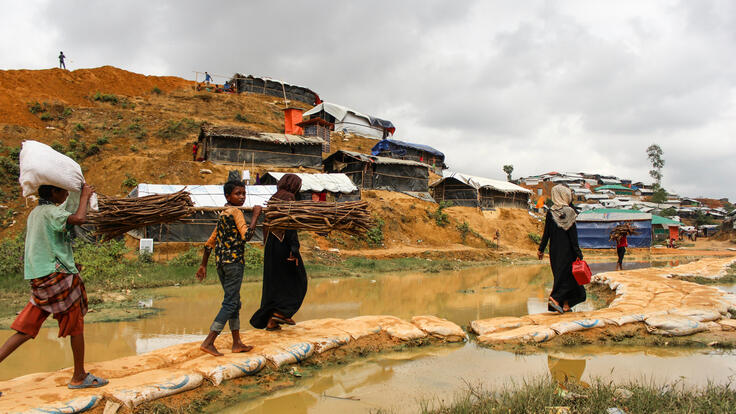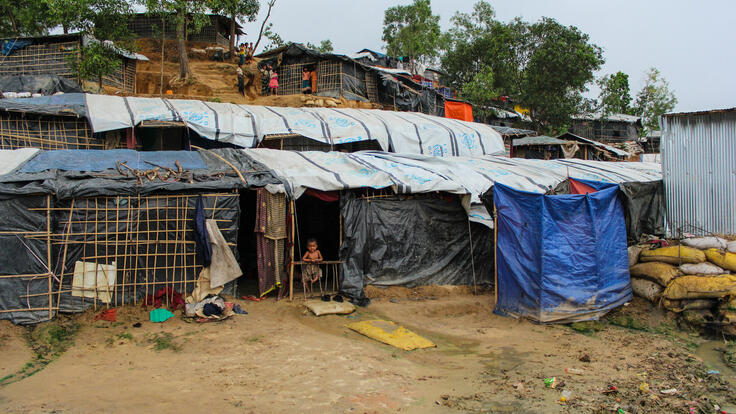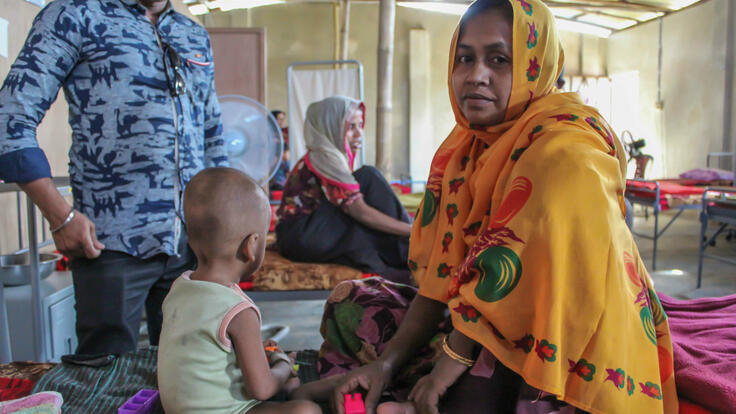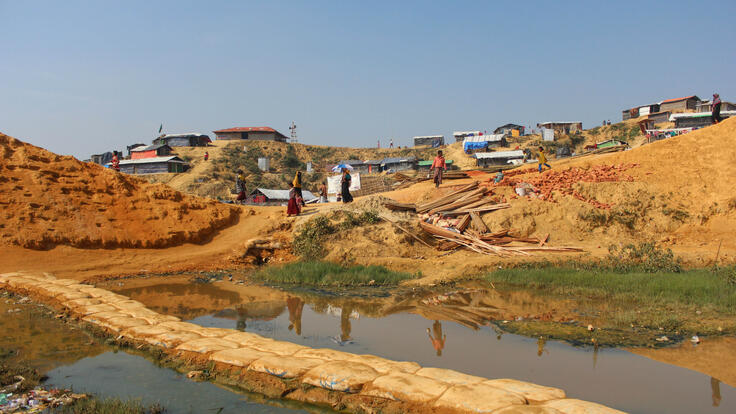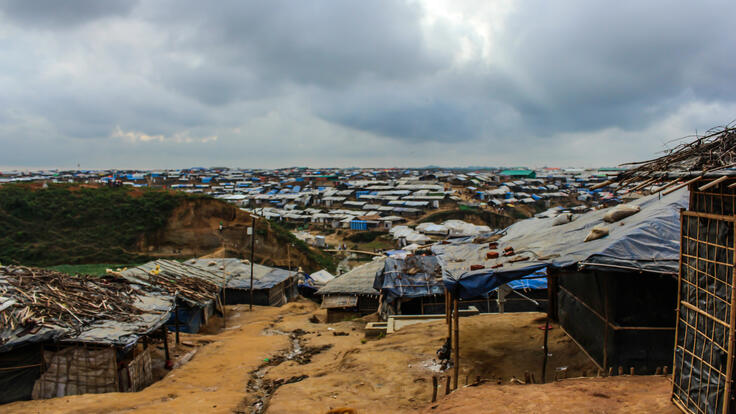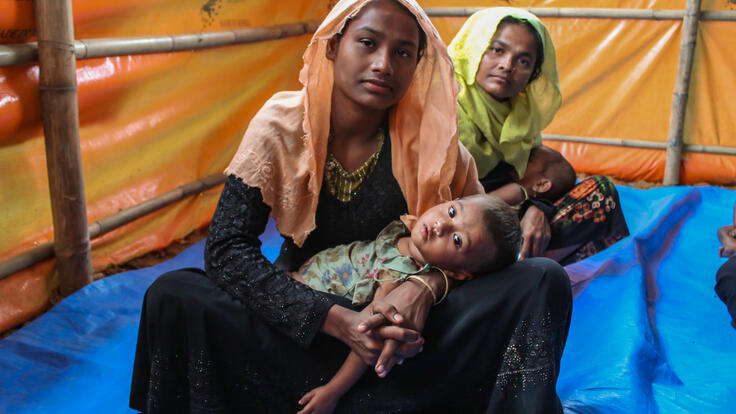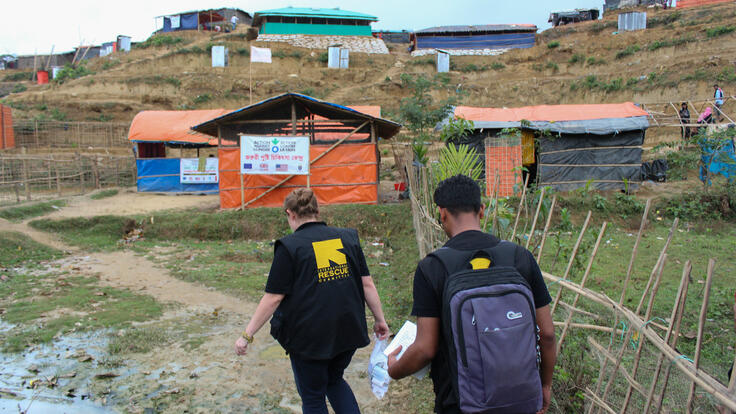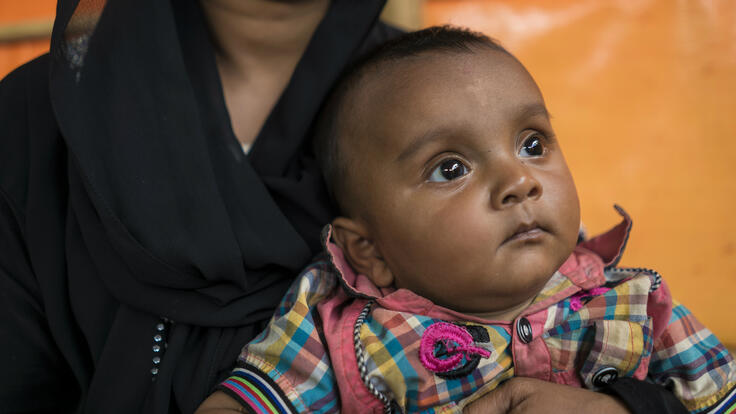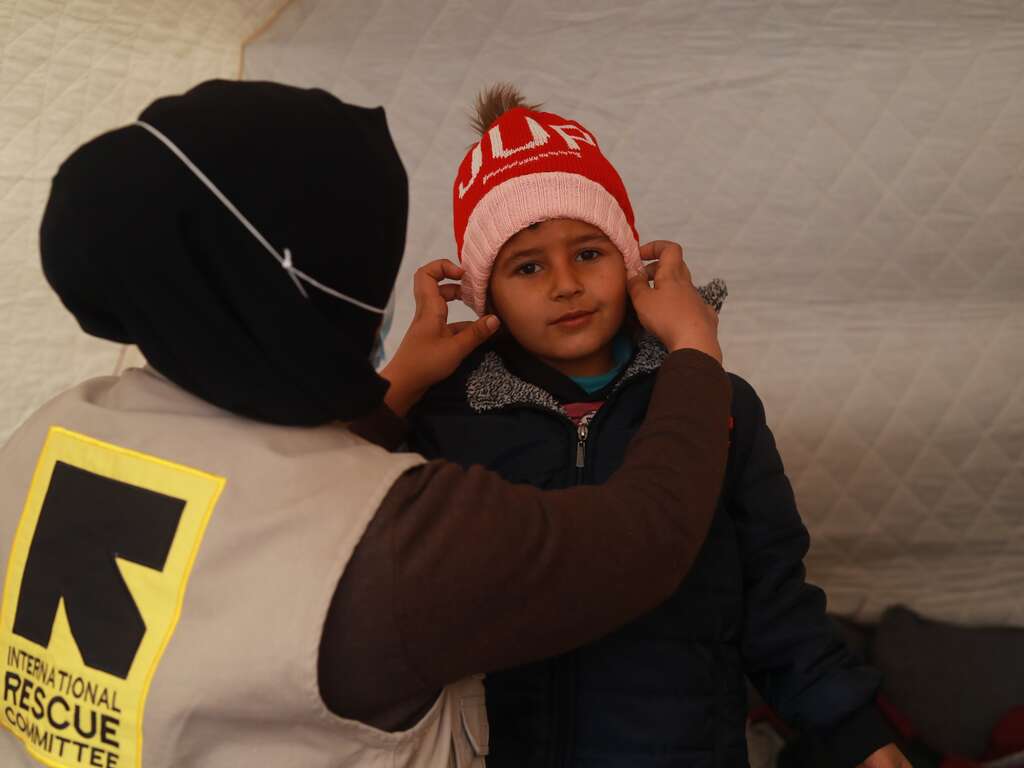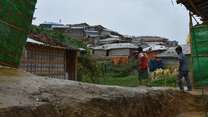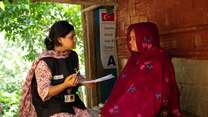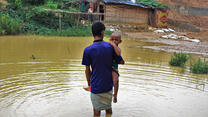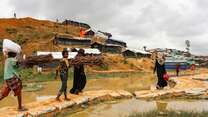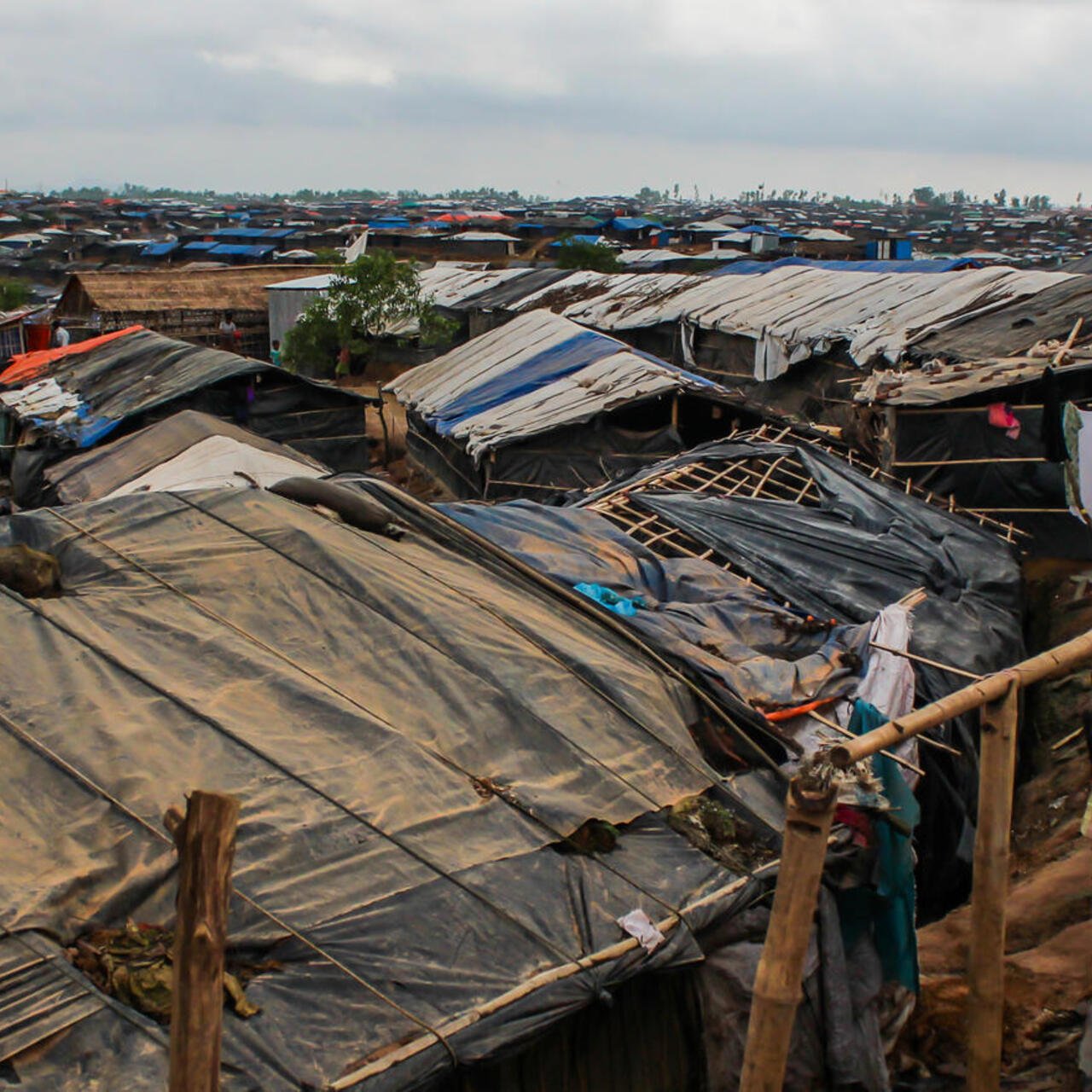
Since August 2017, nearly 700,000 Rohingya refugees have fled Myanmar to neighboring Bangladesh, putting a huge strain on the country’s already limited resources. In addition, the Bay of Bengal region of South Asia is prone to devastating natural disasters, including monsoons.
What is the monsoon season?
The full monsoon season in Bangladesh runs from May to October, with the first rains falling in April. Already, the first rains in the refugee camps near Cox’s Bazar, southeast Bangladesh, have turned roads into muddy paths and streams. Meteorologists are predicting more than 23 inches of rain in the month of July alone—more than seven times the wettest month in London.
What are the main dangers of this year’s monsoon season?
The Rohingya refugee population in the Bangladesh camps has tripled since last monsoon season. Between 100,000 and 150,000 refugees are at extreme risk, living in flimsy shelters in areas prone to flooding and landslides. Hundreds of thousands more will likely be cut off from lifesaving services by rising water. About one third of the health posts in the Kutupalong-Balukhali mega camp will become unusable—a situation that may prove fatal for the most vulnerable refugees.
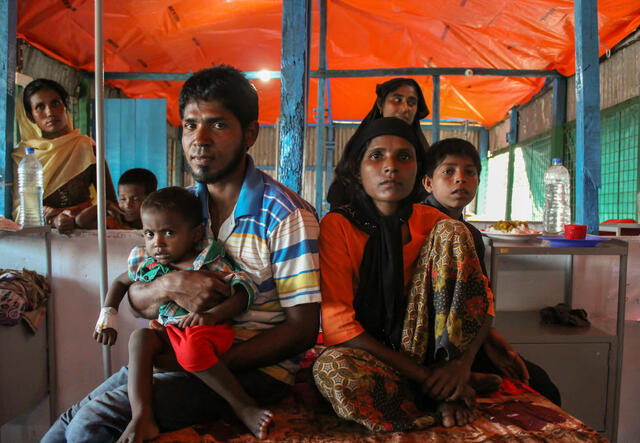
Why are homes so likely to be destroyed?
Refugees have built makeshift shelters from available materials, such as bamboo and tarpaulin, which will not stand up to lashing rain and heavy wind. The new arrivals had no choice but to strip the land of vegetation, even roots, to use as fuel, making the ground susceptible to erosion and posing a serious risk of landslides on overcrowded hillsides.
Why will the monsoon season bring disease?
Of particular concern is the proliferation of disease exacerbated by flooding and stagnant water. January saw a diphtheria outbreak sweep through the population, affecting some 6,600 refugees. A comprehensive vaccination campaign managed to contain the epidemic, but extreme weather, overcrowding, and the lack of functioning health facilities presage a public health emergency. Cases of cholera and hepatitis A and E are predicted to skyrocket in coming months. The International Rescue Committee is stepping up mobile medical teams to support people in hard-to-reach areas.
What is the risk of a cyclone?
In May 2017, Cyclone Mora swept across the region, hitting Rakhine State, Myanmar and Cox’s Bazar with her full fury and creating the worst landslide disaster in 10 years. The cyclone destroyed 50,000 buildings and a quarter of the makeshift settlements in Bangladesh, and ravaged camps for internally-displaced Rohingya in Rakhine. Some three million people were affected by the storm.
